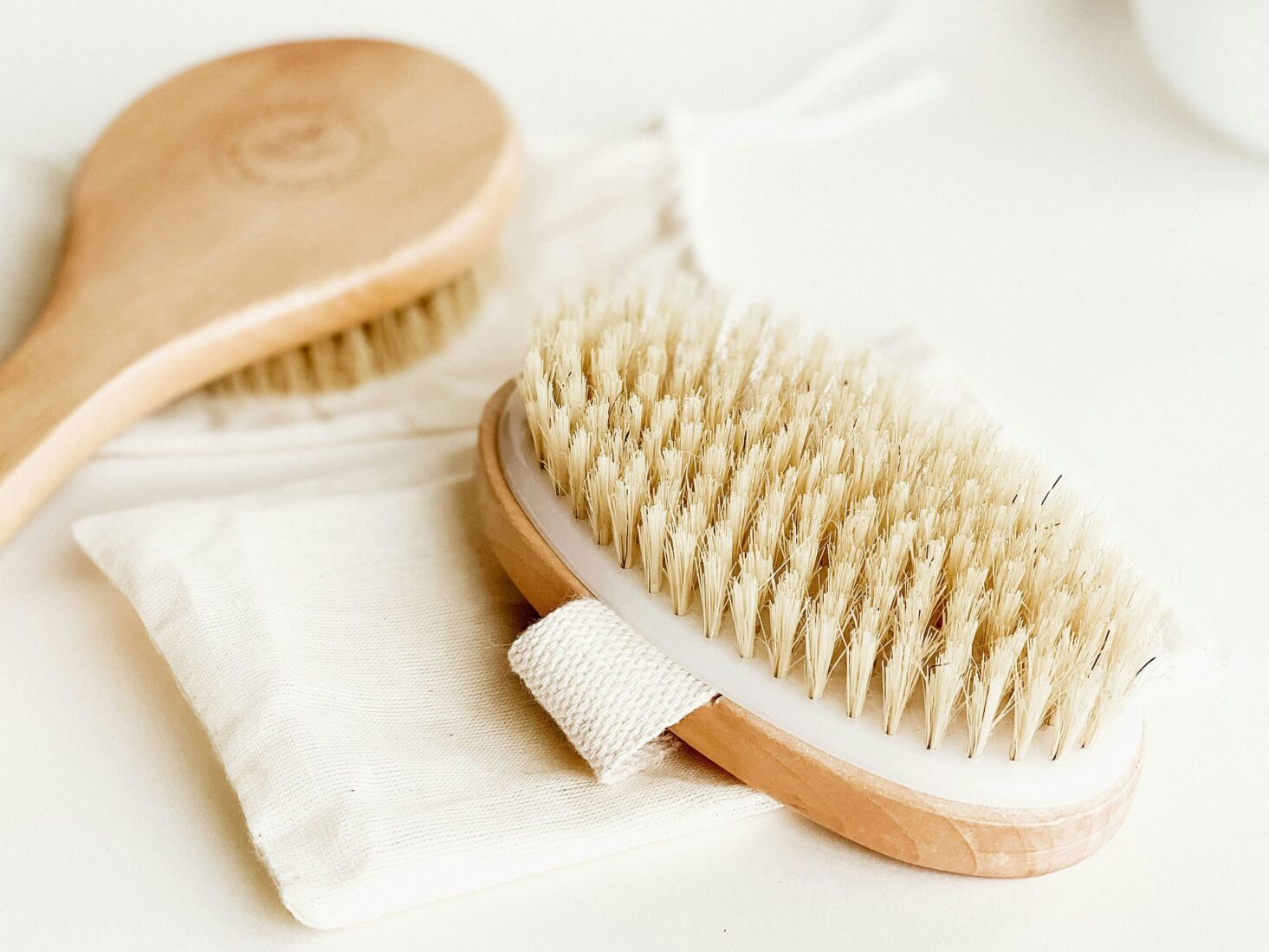
Dry brushing: What it is, why it works and how to do it at home
Want silky smooth skin for summer? Try dry brushing: the latest beauty trend promising stellar results
Haven’t heard of dry brushing? Allow us to fill you in. The latest wellbeing trend is based on a traditional Ayurvedic practice, known as garshana, and is a massage technique that exfoliates dry skin. But, while we know exfoliating is necessary for the face to unclog pores, how is it beneficial for the body?
Exfoliating, put simply, removes dead skin cells – and scrubbing in the shower alone is not always enough to exfoliate properly. A dry brush – usually a wooden brush made with coarse bristles – is used to remove dead skin and improve the skin’s ability to eliminate toxins from the body. The latter is achieved by the lymphatic system, which can be boosted through movement and massage techniques such as dry brushing. To find out more, we asked Nina Prisk – skin and aesthetics expert at Update Aesthetics based in Cornwall and Harley Street – and Katja Kokko-Isaac, co-founder of Ecocert-verified skincare brand Djusie, to give us the full lowdown.
Is it better to brush your body wet or dry?
“Brushing your body helps to unclog pores and remove dead skin cells, exfoliating the skin. It also helps to increase blood circulation which aids detoxification and, some believe, promotes lymph flow and drainage,” says Prisk. “By unclogging the pores, it’s easier for the body to sweat, aiding the elimination of toxins and also helping to reduce fluid retention and cellulite. Most people notice their skin will be softer too. You can brush your skin when wet or dry and both are beneficial, however, many people believe that dry brushing is the most beneficial because it doesn’t dry the skin like water can.”


How do you dry brush your body?
“Before brushing, it’s important to always open the areas of the most important lymph nodes by hand because [these] work as filters for the lymph fluid. If you just brush without opening the lymph nodes, the fluids don’t have anywhere to flow. It’s like stirring dirty water in a blocked sink without opening the blockage,” says Kokko-Isaac. “The areas to open before brushing are the dip of the clavicle, the side of the neck, below the ear, armpits, groin and behind the knee. Do this by stretching the skin with your fingers.”
Prisk explains: “When body brushing, it’s important to remember not to scrub your skin as this can cause damage to the skin barrier, resulting in irritation and sensitivity. Instead, you should use the brush to make gentle, long strokes of the bristles. It’s also important to avoid brushing skin affected by eczema, psoriasis, acne, sunburn, cancer, warts, open wounds, or any other skin condition as it could aggravate or exacerbate these.
“Similarly, if you’ve got sensitive skin then it’s advisable to use a softer bristled brush and not apply too much pressure. Don’t do this too often, ideally no more than a couple of times a week in order to avoid over-exfoliation which can result in irritation and sensitivity.
“It’s usually advised to start at your feet and move up the body, using wide, circular clockwise strokes, and to finish with your arms. When brushing your stomach, move the brush in a circular clockwise motion in order to help aid the flow of digestion.”
Should you always shower after dry brushing?
"Showering after dry brushing is a great way to get rid of all the dead skin cells that you’ve just exfoliated," says Prisk.
How long does it take to see the benefits of dry brushing?
"Benefits include feeling energised, reduced puffiness and clearer skin. The lymphatic system is in charge of filtering the proteins, cellular waste, dead cells and bacteria from the fluids, and lack of movement, stress and an unhealthy lifestyle can cause stagnation to this flow," explains Kokko-Isaac. "This can then manifest as a foggy head and skin imbalances. There are many ways to boost the lymph nodes, but dry brushing is a targeted method and you can feel the difference immediately."
"Many people will notice that skin looks less dull and brighter, as well as feels softer after dry brushing just a few times," says Prisk. "But it’s something that needs to be done regularly in order to achieve more long-term results such as reducing cellulite."

Do you dry brush your face?
"While it is possible to dry brush your face, and some people report that their skin looks brighter and feels softer as a result, it’s important not to apply too much pressure on the face, and also to avoid delicate areas such as around the eyes. Ensure that the bristles aren’t too firm either in order to avoid damage to the delicate skin on the face which is thinner than that on the body," adds Prisk.
Dry brushing products to use at home
Read more: Tried and tested: The best eyebrow gels to buy now








